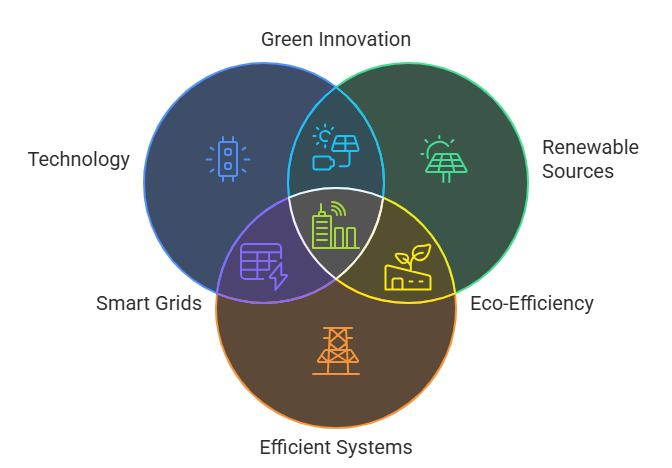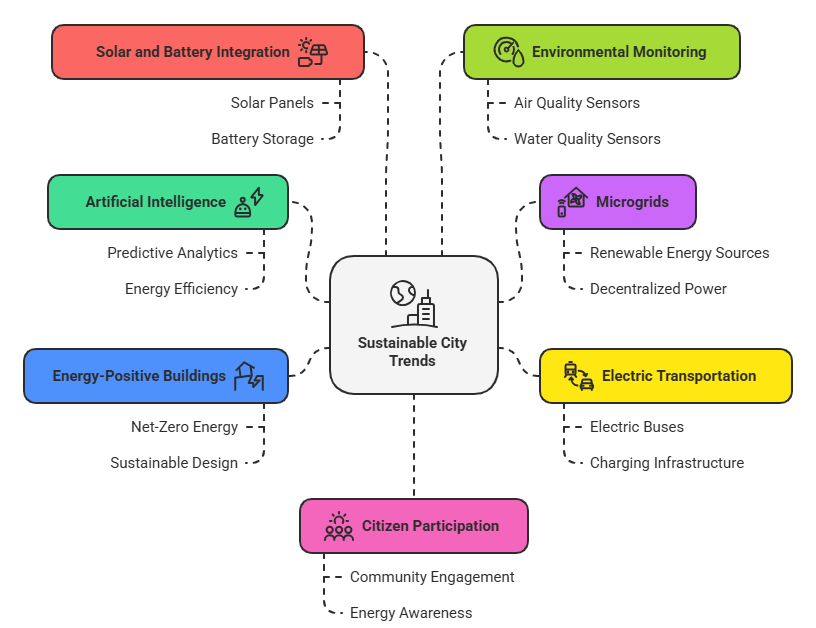As urban populations grow, the need for sustainable, energy-efficient cities becomes more urgent than ever. From reducing carbon footprints to improving quality of life, smart energy strategies are at the heart of creating greener urban spaces. At 360S2G, we focus on innovative energy solutions that help cities transition toward cleaner, smarter, and more sustainable futures.
The Role of Smart Energy in Modern Cities
Smart energy is about integrating technology, renewable sources, and efficient systems to power urban environments. By harnessing innovations like advanced grid management, clean electricity, and solar integration, cities can:
- Reduce energy waste
- Lower greenhouse gas emissions
- Cut operating costs
- Improve resilience against outages
- Support sustainable urban growth

With the right strategies, cities can strike a balance between energy needs and environmental responsibility.
Why Sustainability Matters for Urban Development
Urban areas account for more than 70% of global CO₂ emissions. Without changes to how we produce and consume energy, environmental and economic challenges will only intensify. Sustainability in cities goes beyond environmental concerns—it affects public health, infrastructure resilience, and economic stability.
Key benefits of sustainable cities include:
- Cleaner air and water quality
- Reduced reliance on fossil fuels
- Stronger local economies through green jobs
- Lower utility costs for residents
- Improved public health outcomes
- Enhanced community well-being
- Greater long-term resilience
Smart Electricity Solutions for Greener Cities
Efficient electricity management is one of the fastest ways to reduce environmental impact. Through Electricity Utilities, 360S2G offers tailored strategies to modernize energy infrastructure.
Examples of smart electricity initiatives:
- Advanced Metering Infrastructure (AMI) for real-time consumption data
- Grid automation for faster outage detection and repair
- Demand-response programs to balance energy loads
- Integration of electric vehicle (EV) charging stations
- Energy storage solutions for peak demand
- Smart lighting systems for public spaces
- Predictive maintenance for utility infrastructure
Harnessing Solar Power for Urban Growth
Solar energy is no longer just a rooftop accessory—it’s a central pillar of urban sustainability. By incorporating large-scale and community-based solar projects, cities can dramatically cut emissions and lower energy costs.
360S2G’s Solar Utilities deliver customized solar solutions for municipalities, businesses, and residential areas.
Benefits of solar adoption in cities:
- Significant reduction in carbon emissions
- Lower energy bills for residents and businesses
- Energy independence and resilience
- Ability to store and use clean energy during peak hours
- Minimal maintenance and long operational lifespan
- Supports city-wide renewable energy goals
- Creates local green job opportunities
Integrating Sustainability Into City Planning
Sustainability should not be an afterthought—it needs to be embedded into urban planning, building design, and infrastructure development. This involves collaboration between governments, businesses, and technology providers like 360S2G’s Energy & Utility Consulting.
Essential elements of green city planning:
- Transit-oriented development to reduce car dependency
- Green roofs and walls to enhance insulation and air quality
- Water conservation systems in public and private spaces
- Smart waste management to minimize landfill use
- Renewable energy integration into building codes
- Walkable, bike-friendly urban layouts
- Public awareness and sustainability education programs
Overcoming Challenges in Smart Energy Transition
While the vision for greener cities is clear, the journey requires overcoming technological, financial, and policy-related challenges. Addressing these barriers ensures long-term success in sustainability initiatives.
Common challenges and solutions:
- High upfront costs → Incentives, grants, and financing models
- Infrastructure limitations → Gradual grid modernization plans
- Public resistance to change → Community engagement and education
- Interoperability issues → Standardized smart technology platforms
- Regulatory hurdles → Policy advocacy and collaborative frameworks
- Data security concerns → Advanced cybersecurity measures
- Skill gaps in workforce → Training programs for green energy jobs
The Future of Greener Cities
The next generation of cities will be data-driven, energy-smart, and environmentally resilient. By adopting smart grids, renewable energy, and sustainable policies, we can create urban spaces that are not only efficient but also healthier and more livable.
Key trends shaping the future of sustainable cities:
- Artificial Intelligence for predictive energy management
- Microgrids for localized renewable power generation
- Expansion of electric public transportation systems
- Energy-positive buildings that generate surplus power
- Widespread solar and battery integration
- Real-time environmental monitoring sensors
- Increased citizen participation in energy conservation

Conclusion
Building greener cities is no longer optional—it’s essential for economic stability, public health, and environmental preservation. Through smart energy and sustainability solutions, 360S2G is helping cities across the globe embrace a cleaner and more sustainable future.By leveraging electricity innovation, solar energy, and forward-thinking urban design, we can create cities that are not just places to live—but thriving, eco-friendly ecosystems for generations to come.
Request A Demo


Add a Comment